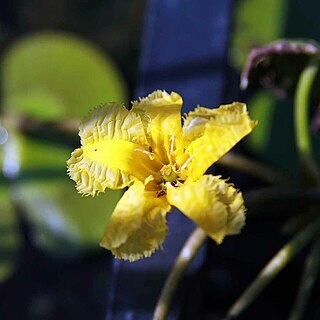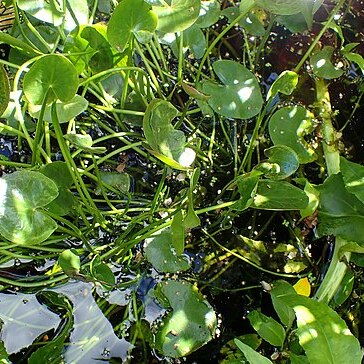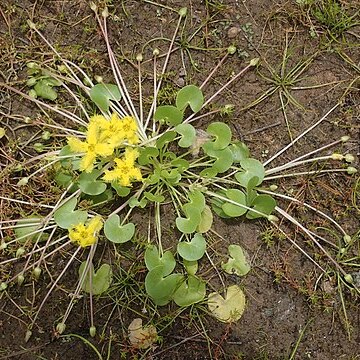A water-lily like plant. Stems are usually absent. The leaves are round with a heart shaped base and floating. They are 3-8 cm across. The leaf stalks are 20 cm long. The flowers are yellow and the petals have fringes. The flowers are 3 cm across. The fruit is a capsule 0.5-0.8 cm long. The seeds are round but slightly flattened.



